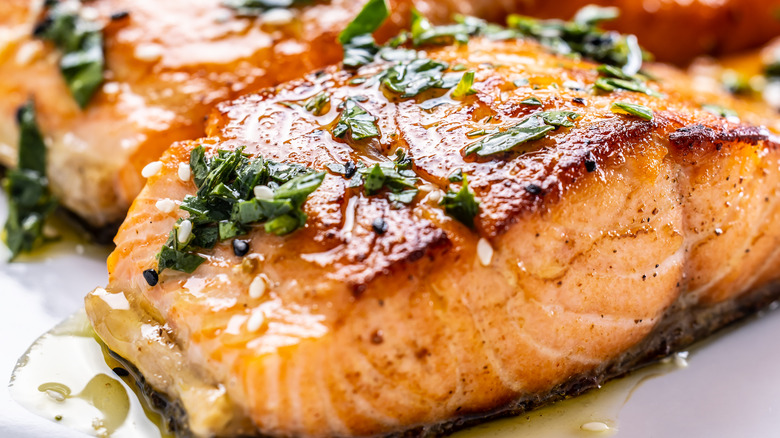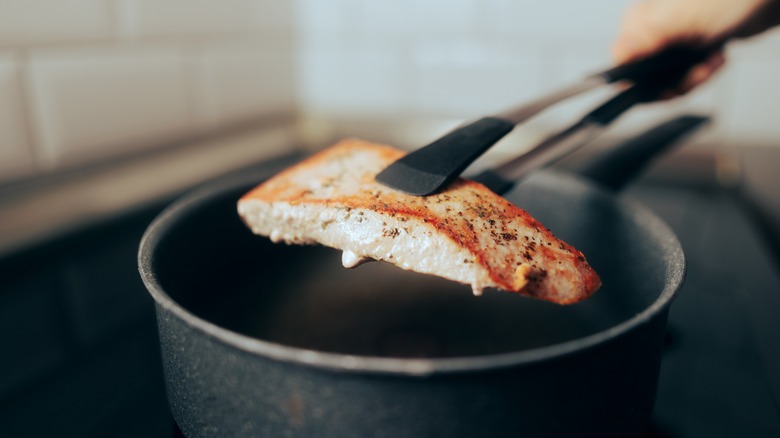A Sprinkle Of Sugar Is All You Need To Amp Up Your Next Fish Dish
Fish tends to be blissfully simple to make. At its easiest, all you need to do is pat your filets dry, drizzle them with oil and a dose of your preferred flavorings (like the delectable mint-ginger marinade in our baked cod recipe), and toss them in the oven or on the stove. Because cooking fish can be so straightforward, it often doesn't take much to make a big difference in how your final product tastes. And if you want to level up your next recipe while keeping your ingredient list nice and short, just add one component: sugar.
What does sugar accomplish here? It can help give your filets a firmer texture since its granules (along with salts) are known to absorb moisture. It can also help balance the flavors in your protein since cooked fish (and most of the seasonings it pairs with) tends to have a savory, somewhat salty taste. But the real beauty of adding a sprinkle of sugar comes down to caramelization. When cooked on your fish, sugar granules accelerate the Maillard reaction, which causes browning and results in a crispy, golden crust.
There's nothing fishy about a little sugar
Regular cane sugar will work here, but feel free to substitute with brown or coconut sugar. Brown sugar will add a little color and coconut will pair well with any tropical flavors or marinades you use, like our Easy Baked Mahi Mahi, which comes with a mango pepper salsa. You only need about 1 tablespoon but you can amp that amount up to one-quarter cup for four six-ounce filets if you want extra sweetness. Going with the latter option, however, means you may want to balance out that sugar with other flavorings. Keep it simple with an additional sprinkle of salt, or mix in ingredients like lemon zest, paprika, herbs, chili powder, or mustard. Combine brown sugar with vinegar, soy sauce, red pepper flakes, and miso paste like our Miso Salmon recipe does. Or, incorporate ingredients like tamari, tomato paste, and cider vinegar à la our Bourbon Glazed Salmon.
Whichever option you go with, you'll ideally want to cook your fish on the stove first. This gives it time to sear, creating that perfectly crusty skin. You'll need about four minutes in a pan on medium heat to achieve this, after which point you can flip and transfer the filets to the oven, or keep cooking them on the stove until they're done.

